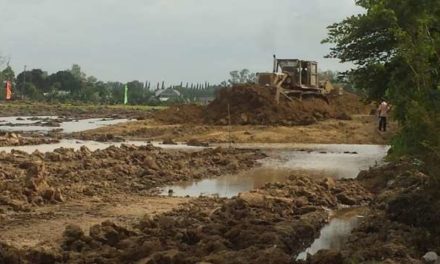by Walden Bello, the Nation Newspaper, 5 December, 1997, Bangkok, Thailand
The IMF austerity measures brought a decade of zero or minimal economic growth in Latin America and Africa. Similarly, Asia will see the recession induced by the current crisis turn into a long period of stagnation, argues Walden Bello in the last of a three-part series.
Seldom in economic history has a region fallen so fast from economic grace. From being one of the the world’s hottest economic zones, Southeast Asia now faces a bleak future marked by the following likely developments.
– First, despite statements made by some Southeast Asian governments (as well as by professional Asian miracle boosters like Harvard’s Jeffrey Sachs) that the crisis is a short-term one — a phase in the normal ebb and flow of global capital — there is a strategic withdrawal of finance from the Southeast Asian region.
Capital movements may indeed be dictated by a mixture of rationality and irrationality. But one thing is certain, foreign capital is not so irrational as to return to Southeast Asia any time soon. For in most investors’ minds, the most likely scenario is one of prolonged crisis, as laid out by the chairman of a key player in the Asian investment scene, Salomon Brothers Asia Pacific.
US mutual funds, he said, had been supplying net new capital to the region of up to US$5 billion a year but were now pulling out owing to the bleak investment outlook. The currency instability would last from seven to 12 months, if the earlier experiences of Mexico, Finland and Sweden were any indication, during which there would be weak domestic demand and ”severe contraction in GDP in some of them”.
– A second likely development is that foreign investors will most likely follow the lead of banks and portfolio investors and significantly decrease their commitments to the region.
General Motors is now said to be regretting its 1996 decision to set up a major assembly plant in Thailand to churn out cars for what was then seen as an infinitely growing Southeast Asian market.
How Japanese direct investors who dominate the region will react is, however, the decisive question. Some analysts say that new investment flows from Japan are not likely to be reduced that much since the Japanese are continuing to pursue a strategic plan of making Southeast Asia an integrated production base.
In Thailand alone, it is pointed out, more than 1,100 Japanese companies are ensconced, and only a massive economic downturn can reverse the momentum that has built up. As one Japanese executive told The Nation
, Japanese investment ”is a long-term strategy where investments are increased on a year-to-year basis, so I don’t think a 10 to 20 per cent devaluation will force Japanese investors to change their investment strategies for Thailand.
New wrinkle
However, there is a new wrinkle to the situation that makes it different from the early 1990s. First of all, Japanese investment strategies in the last few years have targeted Southeast Asia not just as an export platform for third-country markets but increasingly as prosperous middle-class markets to be tapped — and these markets are expected to contract severely.
Second, diverting production from Southeast Asian markets to Japan will be difficult since Japan’s recession, instead of giving way to recovery as expected earlier this year, is becoming even deeper, with an astounding 11 per cent decline in GDP on an annualised basis recorded in the second quarter.
Finally, redirecting production to the US is going to be very difficult, unless the Japanese want to provoke the wrath of Washington, which is already warning Japan not to ”export its way out of its recession” and is increasingly responsive to claims from US manufacturers that the Southeast Asian economies’ trade surpluses with the US are really mainly trade surpluses registered by Japanese companies that have relocated to the region — implying that they must be added to Japan’s official trade surplus with the US.
The upshot of all this is that Japan is likely to be burdened with significant over-capacity in its Southeast Asian manufacturing network, and this will trigger a significant plunge in the level of fresh commitments of capital to the region.
* A third likely development that will lengthen the shadow of gloom in the region is that the US and the IMF are likely to take advantage of the crisis to press for further liberalisation of Asean economies. While many Asian economic managers are now coming around to the position that weak controls on the flow of international capital has been a major cause of the currency crisis, US officials and economists are taking exactly the opposite position: that it was incomplete liberalisation that was one of the key causes of the crisis.
The fixing of the exchange rate has been identified as the major culprit by Northern analysts, conveniently forgetting that it was Northern fund managers who had emphasised the stability that fixed rates brought to the local investment scene, and not even the IMF had advocated a truly free float for Third World currencies owing to its fears of inflationary pressure and other forms of economic instability this might generate.
But the agenda of US economic authorities goes beyond the currency question to include the accelerated deregulation, privatisation and liberalisation of the trade in goods and services in a part of the world which many American corporations regard as one of the world’s most protectionist and government-managed in economic orientation.
Faster liberalisation
Formerly, the economic clout of Southeast Asian countries enabled them to successfully resist Washington’s demands for faster trade liberalisation. Indeed, they were able to derail Washington’s push to transform the Asia-Pacific Economic Cooperation (Apec) into a free trade area.
But with the changed situation, the capacity to resist has been drastically weakened, and there is no way to prevent Washington and the IMF from completing the liberalisation or structural adjustment of the region’s economies, where the process was aborted (with the significant exception of financial liberalisation) in the late eighties owing to the cornucopia of Japanese investment.
Indeed, as part of the package of reforms agreed with the IMF, Thai authorities have removed all limitations on foreign ownership of Thai financial firms and are pushing ahead with even more liberal foreign investment legislation to allow foreigners to own land. Even before it sought the help of the IMF, Jakarta abolished a 49 per cent limit for foreign investors to buy IPO shares in publicly listed companies. And as part of the IMF deal, it is expected that the Indonesian government will end attempts at industrial policy such as the national car project of President Suharto’s son and the ambitious high-tech effort to manufacture passenger jets by his science and technology minister, Yusuf Habibie.
Because of the depressive effects of severe spending cuts, currency depreciation and the channelling of national financial resources to service foreign debt, structural adjustment programmes in Latin America and Africa brought on a decade of zero or minimal GNP growth in the 1980s. It is likely that with the resumption of structural adjustment that was aborted in the mid-eighties by the influx of Japanese investment, Southeast Asia’s economies will see the recession induced by the current crisis turn into a longer period of economic stagnation.
Such a prospect promises political instability, particularly in Indonesia, where the legitimacy of the 30-year-old authoritarian regime was already severely eroded before the currency crisis and where opposition groups are increasingly more vocal in their challenge to the regime.
All this has translated into a pervasive feeling throughout the region that an era has passed, that the so-called ”Southeast Asian miracle” has come to an end. Increasingly, some say that the miracle was a mirage, that high growth rates for a long time put the lid on what was actually a strip-mine type of growth that saw the development of the financial and services sectors at the expense of agriculture and industry, intensified inequalities and disrupted the environment, probably irretrievably.
Legacy of miracle
In Thailand, where the crisis in the real economy is spreading most quickly with some 10 per cent of the workforce expected to be unemployed by the end of 1997, the balance of costs and benefits of the last decade of fast-track growth is painfully evident. The legacy of this process is an industry whose technology is antiquated, a countryside marked by continuing deep poverty and a distribution of income worse than it was over two decades ago.
Indeed, inequality has reached Latin American levels, with the income going to the top 20 per cent of households rising from 50 per cent in 1975 to 53 per cent in 1994, while the income of the bottom 40 per cent declined from 15 to 14 per cent. As the World Bank admitted in a recent much-cited study, this pattern of growing inequality has marked most of the other ”tiger” economies.
But it is probably the rapid rundown of natural capital and the massive environmental destabilisation that will serve as an enduring legacy of the miracle that has vanished.
In Indonesia, deforestation has accelerated to 2.4 million hectares a year, one of the highest in the world. Industrial pollution is pervasive in centres like Jakarta and Surabaya, with about 73 per cent of water samples taken in Jakarta discovered to be highly contaminated by chemical pollutants. In the East Malaysian state of Sarawak, 30 per cent of the forest disappeared in barely 23 years, while in Peninsular Malaysia, only 27 per cent of 116 rivers surveyed by authorities were said to be pollution free, the rest being ranked either ”biologically dead” or ”dying”.
Thailand is no different. Only 17 per cent of the country’s land area remains covered by forest, and this is said to be an underestimation. The Chao Phya River that runs through Bangkok is biologically dead in its lower reaches. Only 50,000 of the 3.5 million metric tonnes of hazardous waste produced each year are treated, with the rest being disposed of in ways that gravely threaten public health, like being dumped in shallow underground pits where seepage can end up contaminating aquifers. So unhealthy is Bangkok’s air that a few years ago, a University of Hawaii team measuring air pollution reportedly refused to return to the city.
”I ask myself constantly what we have been left with that is positive,” Prof Nikhom Chandravithum, one of the country’s most respected civic leaders, recently told a public meeting. ”And, honestly, I can’t think of any.”
————-
Walden Bello, a contributing editor for The Nation, is a professor of sociology and public administration at the University of the Philippines and co-director of Focus on the Global South at Chulalongkorn University’s Social Research Institute. He is the author of nine books on East Asian economic and political issues, including the forthcoming ”A Siamese Tragedy: Development and Disaster in Modern-Day Thailand”.








